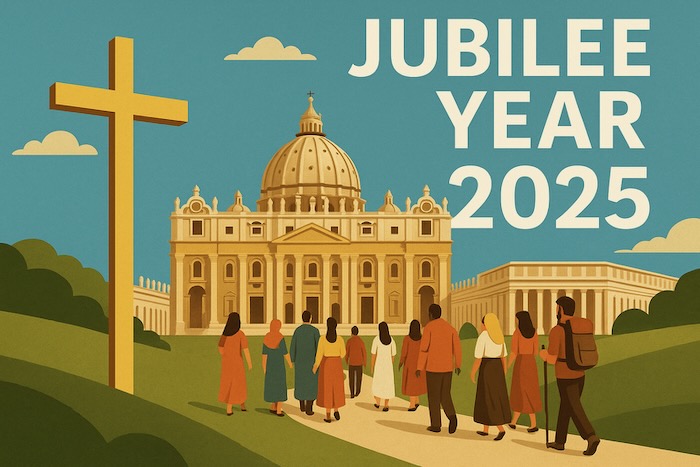Looking for Religion Story Ideas on the Horizon? (June 2025 edition)

Early each month, the International Association of Religion Journalists (IARJ) will be publishing a “Religion Story Ideas on the Horizon” column as a helpful way to spark ideas for our colleagues reporting on religion, spirituality and related cultures around the world. Sponsored by the Communications Committee of the IARJ, these short columns are designed to be helpful brainstorming opportunities as our colleagues look for stories in coming months.
Jubilee Year in the Catholic Church
Many journalists around the world reported on the start of the historic Jubilee Year when it began in December 2024—but remember that related events continue throughout 2025 until the conclusion of this “year” on January 6, 2026. The Vatican hosts a helpful Jubilee-themed website in multiple languages. Within that site, you also can find a schedule of monthly Jubilee events, many of which will involve Catholics from around the world.
Scopes Trial Centennial
On July 21, 1925, the verdict was rendered in the case of high school teacher John T. Scopes, who dared to teach evolution in an American Bible Belt community. This is a major milestone in American history, and it quickly became a part of global culture as a symbol of the friction between science and faith. This trial was fictionalized in the dramatic play Inherit the Wind, which has been performed around the world, including in 2018 in a Bengali adaptation. The various film versions also have been popular with audiences worldwide. A religion writer could examine how that trial has found its way, in some form, into communities around the world—or a journalist might ask the question: How much has changed in the popular concepts of science and religion since Scopes?
Centennial of the Romanian Patriarchate
Branches of this Orthodox church exist around the world, including across the U.S. The historic context is complex partly because of the Romanian Orthodox diaspora that took place during the Cold War—and the church’s troubled history in its homeland from World War II through the second half of the 20th Century. Nevertheless, the entire Romanian Orthodox Church plans to celebrate its relatively new People’s Salvation Cathedral with a huge event in October 2025. Among other remarkable details about this world landmark, this cathedral now is the tallest and largest Orthodox church, and the interior has vast mosaics that make this quite a story to cover as the big event approaches.
American Academy of Religion annual meeting
IARJ founder David Briggs always understood the value of attending this gathering of scholars studying religion—and he often walked away from the AAR with a thick notebook full of story ideas. While based in the U.S., the AAR’s November annual conference will attract scholars from around the world—presenting their research on topics that circle the globe. Here’s the AAR link to its list of annual meetings. Even if covering the conference in person may be impossible, looking through the long lists of presenters and their topics might turn up a great “local” story for reporters, wherever they are based.
Look into Lughnasadh
Most religion writers overlook festivals like Lughnasadh, partly because they represent minority spiritual groups and reporters sometimes find it difficult to find participants willing to share these traditions. This festivals with roots in Celtic-Gaelic tradition is marked in communities across Europe and the U.S. and also has crossed over into neo-pagan and wiccan communities. Sometimes referred to as Lunasa or Lammas, the festival is August 1.
Have you reported on Ashura?
This is another annual observance that most religion writers don’t cover each year, partly because it emphasizes distinctions between Shi’a and Sunni Muslims. Ashura is an observance across the Islamic calendar, but Shi’a Muslims especially focus on the martyrdom of Husayn ibn Ali, grandson of the Islamic prophet Muhammad. Although this is a complex observance to summarize for a general audience, this can be a fascinating story with vivid customs in many Muslim communities.
Consider a Tisha B’Av story
If you’re willing to tackle complex history and you’re up for the challenge of explaining both complex traditions and modern experiences of Jewish communities, then consider reporting on Tisha B’Av, which falls August 2-3 this year. The observance recalls primarily the destruction of the First and Second Temples in Jerusalem—but there’s a lot more to this annual observance than that simple summary.
